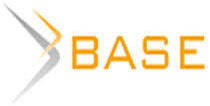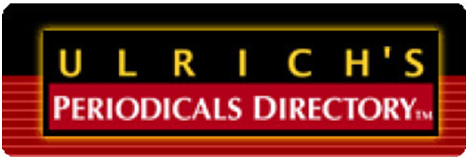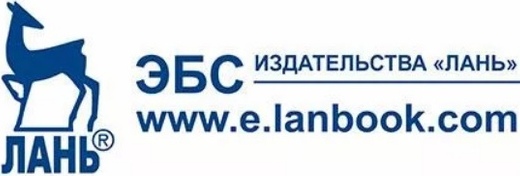Properties of nanostructured vitamin C and prospects for its use in functional food products
The study was conducted to study the properties of nanostructured vitamin C in various carbohydrate shells (xanthan gum, sodium alginate, carrageenan, konjac gum, gellan gum) and the possibility of its use as a functional ingredient. The study of the self-organization of nanostructured vitamin C showed that the formation of nanocapsules occurs spontaneously due to non-covalent interactions. This indicates that they are characterized by self-assembly. Since fractal compositions are found in an aqueous solution of nanocapsules at a sufficiently low concentration, they have self-organization. The presence of a fractal indicates the possibility of obtaining a completely different polymer with an almost unchanged composition of the macromolecule. This "new polymer" will have different molecular characteristics and a different suprasegmental structure. Therefore, nanostructured vitamin C has supramolecular properties. It is shown that the shape and size of vitamin C nanocapsules significantly depend on the nature of the shell. The polydispersity coefficient in xanthan gum is 3.40, which suggests that the vitamin C nanocapsules in this case approach the ellipsoid shape, and in konjac gum, gelan gum, and carrageenan, this coefficient has a value of 1.26, 1.39, and 1.48, respectively, which indicates an approximation of the geometry of these nanocapsules in a spherical shape. At the same time, the average size of nanocapsules also significantly depends on the nature of the shell: the largest average size (358 nm) is characteristic of xanthan gum, and the smallest average size (93 nm) of particles is observed in konjac gum. At the same time, the smallest size of D10 (74 nm) is characteristic of carrageenan. The introduction of nanostructured vitamin C in the formulation of marmalade and wheat bread allows you to get ready-made products with functional properties.
Krolevets A. A. Myachikova N. I. Binkovskay O. V., Boltenko Y. A. (2022), “Properties of nanostructured vitamin C and prospects for its use in functional food products”, Research Result. Business and Service Technologies, 8 (3), pp. 98-111. DOI: 10.18413/2408-9346-2022-8-3-0-9
















While nobody left any comments to this publication.
You can be first.
Chaitanya, N., Muthukrishnan, A., Krishnaprasad, C. et al. (2018), “An insight and update on the analgesic properties of vitamin C”, J. of Pharmacy and Bioallied Sciences, 10 (3), рр. 119-125, [Online], available at: https://www.jpbsonline.org/article.asp?issn=0975-7406;year=2018;volume=10;issue=3;spage=119;epage=125;aulast=Chaitanya (Accessed 31.03.2022).
GOST 6442-2014, Marmelad. Obshchie tekhnicheskie usloviya [Marmalade. General specifications], Moscow: Standartinform, 2019, 5 p., [Online], available at https://docs.cntd.ru/document/1200114235 (Accessed 31.03.2022), Russian.
GOST R 54059-2010. Ingredienty pishchevye funktsional'nye. Klassifikatsiya i obshchie trebovaniya [Functional foods. Functional food ingredients. Classification and general requirements], Moscow, Standartinform, 2019, 7 p., [Online], available at https://docs.cntd.ru/document/1200085998 (Accessed 31.03.2022), Russian.
GOST R 58233-2018. Khleb iz pshenichnoi muki. Obshchie tekhnicheskie usloviya [Wheat bread. Specifications], Moscow, Standartinform, 2019, 14 p., [Online], available at https://docs.cntd.ru/document/1200160973 (Accessed 31.03.2022), Russian.
Grosso, G., Bei, R., Mistretta, A. et al. (2013), “Effects of vitamin C on health: A review of evidence”, Frontiers in Bioscience, 18 (3), рр. 1017-1029, doi:10.2741/4160, [Online], available at: https://pubmed.ncbi.nlm.nih.gov/23747864/ (Accessed 31.03.2022).
Hemilia, H. (2017), “Vitamin C and Infections”, Nutrients, 9 (4), р. 339, doi: 10.3390/nu9040339, [Online], available at: https://pubmed.ncbi.nlm.nih.gov/28353648/ (Accessed 31.03.2022).
Krolevec, A. A., Myachikova, N.I., Dumacheva, E.V., Zinov'eva, I.G., Andreenkov, V.S. and Semenyuk, S.P. (2018), “Nanostructured green tea extracts and their properties”, Scientific Result. Business and Service Technologies [Electronic], 4 (1), рр. 3-14, [Online], available at http://rrbusiness.ru/journal/issue/1-15-2018/ (Accessed 31.03.2022), Russian.
Liflyandskii, V. G. (2006), Vitaminy i mineraly.Ot A do Ya [Vitamins and minerals. From A to Z], Neva, Saint-Petersburg, Russia.
Matveeva, T. V. and Koryachkina, S. YA. (2012), Fiziologicheski funkcional'nye pishchevye ingredienty dlya hlebobulochnyh i konditerskih izdelij [Physiologically functional food ingredients for bakery and confectionery products], FGBOU VPO “Gosuniversitet – UNPK”, Orel, Russia.
Oberbail', K. and Livshits, I. A. (2003) Vitaminy-tseliteli [Vitamins-healers], PARADOX, Minsk, Russia.
Remnev, A. I., Myachikova, N. I., Bin'kovskaya, O. V. et al. (2019), Pishchevye i biologicheski aktivnye dobavki [Food and dietary supplements], Troitskii most, Saint-Petersburg, Russia.
Tutel'yan, V. A. (2012), Khimicheskii sostav i kaloriinost' rossiiskikh produktov pitaniya: spravochnik [Chemical composition and caloric content of Russian food products: reference book], DeLi plyus, Moscow, Russia.
Tyrsin, Yu. A., Krolevets, A. A. and Chizhik, A. S. (2012), Vitaminy i vitaminopodobnye veshchestva [Vitamins and vitamin-like creatures], DeLi plyus, Moscow, Russia.